What is Opt-in Email Marketing & Best Practices
Did you know that opt-in email marketing has been in practice for a very long time? Opt-in best practices evolve and change to keep up with new technologies, but the essence stays the same. Seth Godin, an information-age entrepreneur, coined the term “permission marketing” in his 1999 book.
Permission marketing, when used in email promotions, fosters loyalty and long-term relationships with subscribers. Asking customers to opt-in before sending them marketing content increases the likelihood of readers becoming customers.
In this article, I will share with you everything you need to know about opt-in email marketing and some best practices you can use in your next campaign.
What is opt-in email marketing?

The method of sending marketing content to an email list of prospects who have specifically subscribed to your content is known as opt-in email marketing. Email newsletters, promotional materials, and nurturing email promotions can all be sent. Opt-in implies that prospects or leads are aware that they are added to your email list and agree to receive your emails.
Why is email opt-in important?
There are many types of email that can be considered spam in the eyes of potential customers. This might be emails they don’t like, emails they don’t expect to see in their inbox, or something they subscribed to but later decided to unsubscribe from. As a result, eCommerce marketers must step up their marketing efforts to prevent being blacklisted. The good news is that using opt-in will help a company’s marketing in a variety of ways.
- Create a mailing list quickly. Opt-in, specifically single opt-in, enables marketers to easily create large mailing lists. Prospects can register for a single opt-in in just one stage, and they can do so from third-party websites as well.
- Help in tailoring marketing material to the needs of subscribers. When prospects sign up for a company’s newsletters, the marketer has a greater understanding of the type of content that would appeal to each subscriber.
- Increases open rate. The majority of promotional emails are discarded without being opened. However, with opt-in, a brand can enjoy high open rates on emails sent.
- Make it easy to follow up with a customer. Marketers may contact consumers who have made transactions in order to upsell or cross-sell to them.
How to Build an Opt-in Email List

1. Attract prospects with valuable content
The most critical aspect of expanding your database is to create exclusive and useful content for your buyer personas. Let’s look at how you can use content to expand our opt-in prospect database.
Premium Content Offers
By creating top-of-the-funnel premium content offers such a: industry reports, e-books, and self-help guides you can effectively bring new subscribers into your database.
Blog Content
Blogging is another excellent way to expand your marketing subscriber list. By creating blog content that is valuable to your customer persona on a consistent basis, you create yourself as an industry thought leader who adds value to the group. Prospects who want to advance their skill set and keep up to date on emerging business trends and best practices will subscribe to your blog.
Social Media Content
You can effectively convert curious strangers to engaged prospects by building a presence on social media sites where your target audience spends their time. To draw new users to your website, you can use various forms of content on social media, such as slideshares, videos, infographics, blog posts, and even new premium content access.
2. Ask people to subscribe.
Visitors can opt into your marketing communications by agreeing to offer specific industry news, sales, deals, and freebies. When soliciting prospects’ demographic details and email addresses, it’s critical to position forms in prominent locations on your website, such as your homepage, blog page, or header or footer.
Furthermore, by using social evidence terms in your forms, such as “10,000 subscribers,” you increase the probability that people will opt into your database.
3. Offer gated content.
Another common strategy is to “gate” premium content offers such as industry e-books, newsletters, and customer case studies. Gated content means requiring a prospect to enter their email address via a form in order to access content. This is a great way to grow your database, particularly if you have premium content offers.
4. Become a thought leader.
People are more likely to respond to your emails if they regard you as a thought leader in your field. Many people follow Oprah for her monthly book club picks since they regard her as an expert in the field. They want to hear what she suggests.
People would be less likely to sign up for Oprah’s various newsletters if she weren’t a thought leader. Oprah is a perfect example because she is a thought leader in many fields and has separate email newsletters for each — lifestyle, television, books, and motivation. You should be active on social media, guest blog for other blogs, and share your own useful content if you want to become a thought leader.
5. Use your other email lists.
If, like Oprah, you have several newsletters, you can promote a new email list in one of your existing newsletters. For instance, Oprah should have promoted her book club email list in her lifestyle email newsletter before launching it. Using your existing email lists to create a new opt-in email list is a perfect way to get started.
6. Suggest customers to subscribe during checkout.
It can seem more difficult to attract email subscribers if you run an ecommerce shop. But it doesn’t have to be that way. You should have a checkbox during the checkout process that allows customers to subscribe to your newsletter list.
When users are already filling out a form, adding a small checkbox for your email newsletter is an excellent way to develop your list.
7 Email Opt-in Best Practices Proven to Boost Conversion
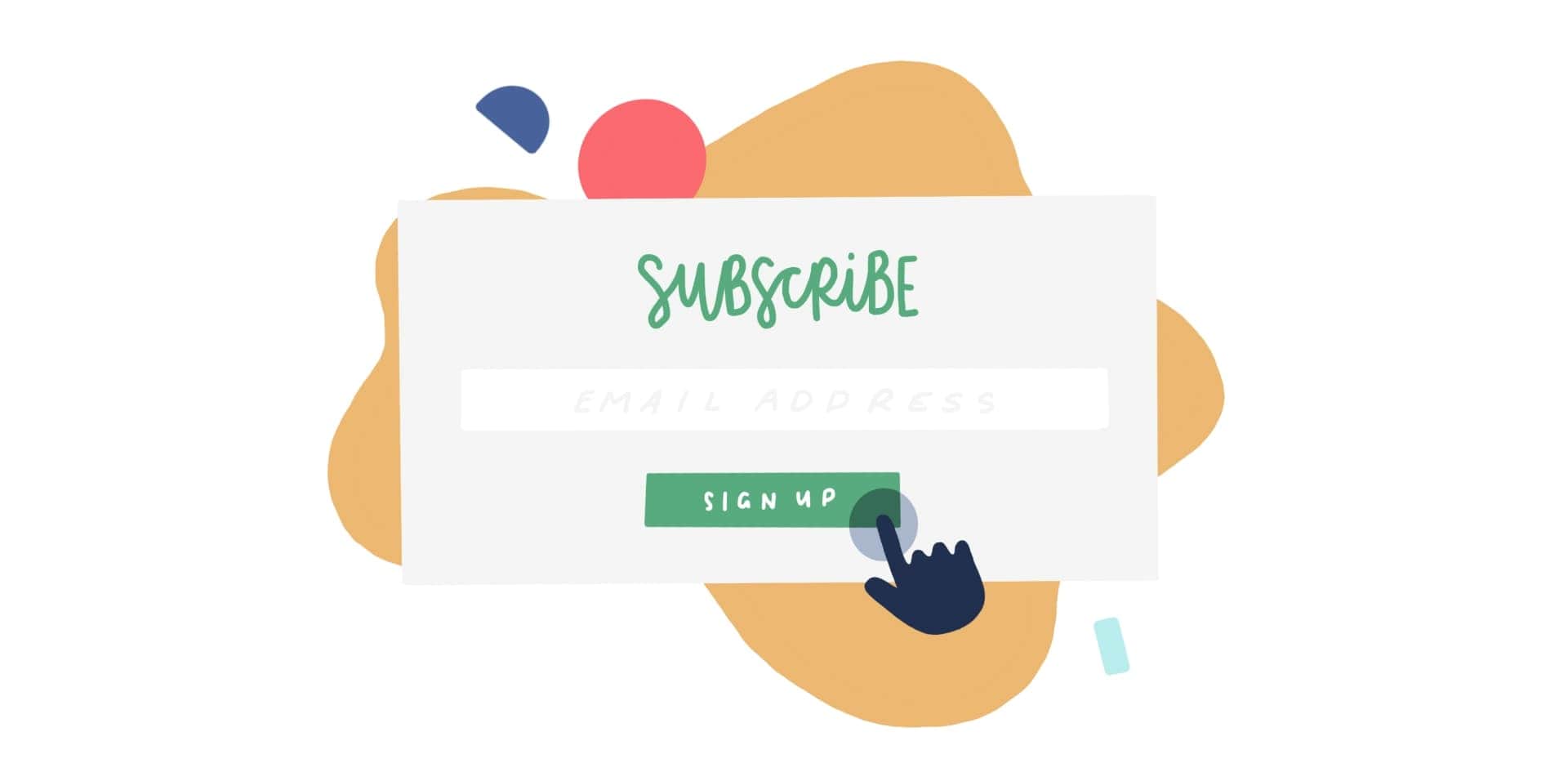
Your list building strategy is directly related to the success of your email opt-in method. Visitors don’t want to waste time before deciding whether or not to subscribe or close your email opt-in form. You have a small number of opportunities to entice visitors to subscribe to your email list, and it must happen on the first thought, which is determined by their opinion of your offer.
Herein lies the challenge: how can you entice your prospects to join your mailing list without interfering with their user experience? These seven essential practices will be critical to improving your list-building strategy and email ROI. They are vital checklists that you can quickly implement if you want to increase your email subscribers.
1. Avoid adding too many fields on your opt-in form
Over the years, studies have shown that the fewer the opt-in type fields, the greater the likelihood of gaining subscribers. This means that any field you add to your opt-ins decreases conversion by 13%.
In general, an email opt-in with two fields performs better than any other combination in which one field requests a visitor’s name and the other field requests his email address.
Any visitor can easily send the information in 30-seconds, but when a visitor sees that he has to submit a long list of information just to subscribe to a mailing list, it is naturally off-putting, unless the essence of the company requires some very vital information about him.
In such cases where additional information is required, it is best practice to retain a two-field opt-in option and then request additional details after conversion. Here’s an example of an industry-standard email opt-in form:
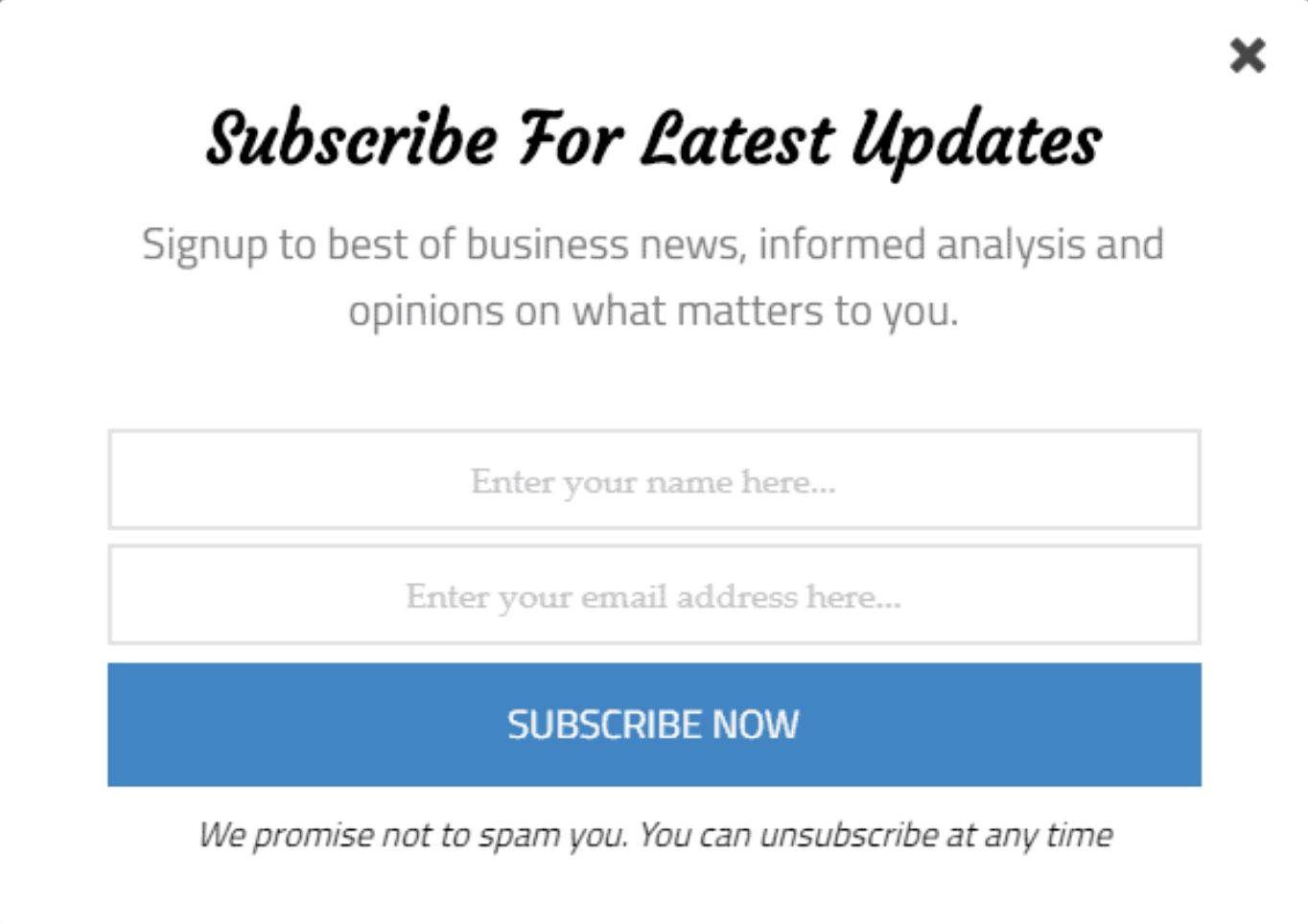
2. Provide an offer
There is a common saying that “there is nothing free in a free town,” and this assertion is valid to a large degree in the email marketing environment. Another effective way to rapidly grow your list is to provide an opportunity.
You’re essentially telling your prospects, “Here’s our offer for free, but you can only get it if you give me your email address.” This seems to be a trick, but it works every time!
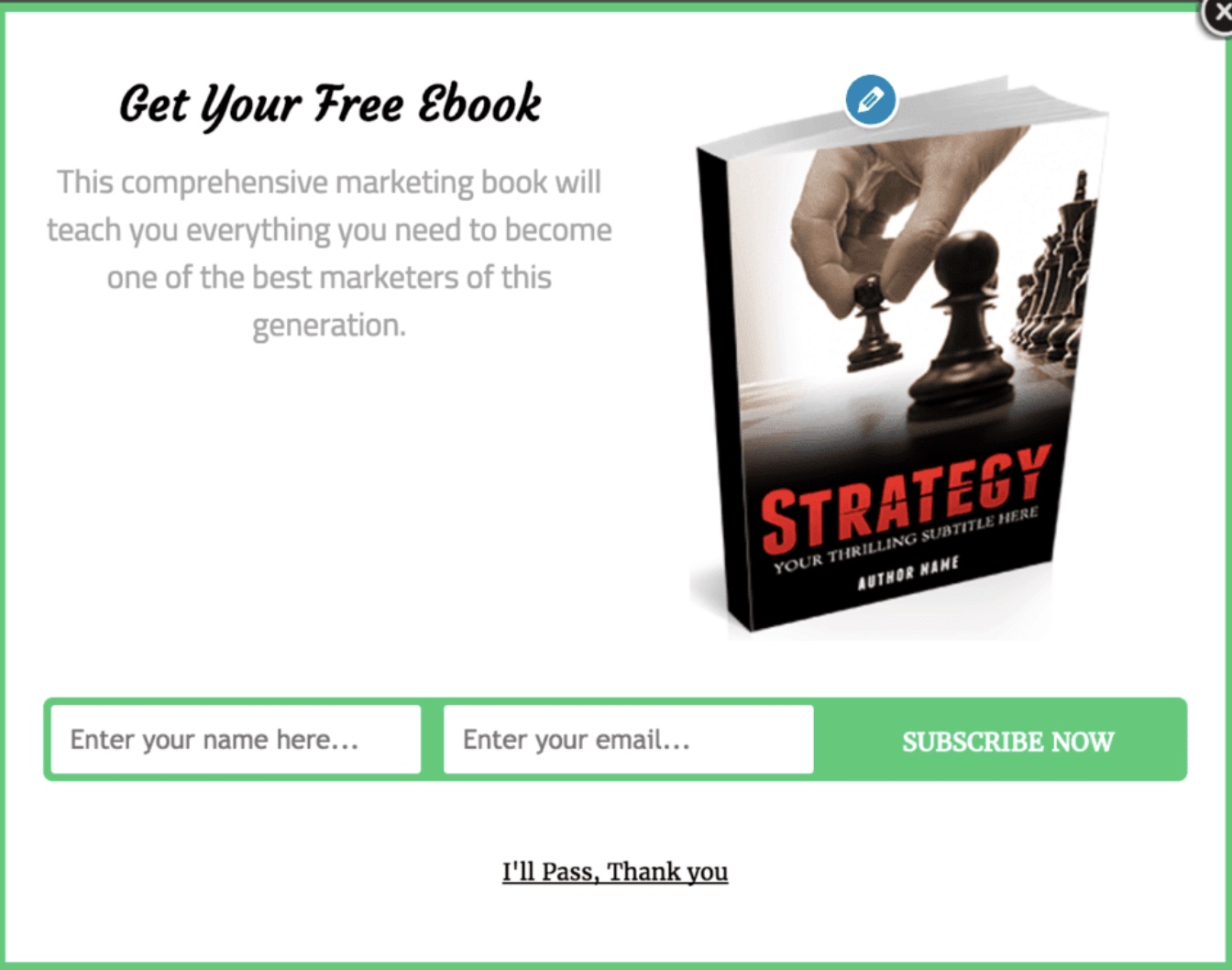
Incentives may include links to a free study, downloaded material, promo codes, video series, and much more. When it comes to providing content to your visitors, even online resources are invaluable. The most remarkable part of this approach is that anyone who is involved in this deal has a valid email address, resulting in a high conversion rate.
Any serious email marketer needs to provide at least one type of reward to their web visitors. When correctly applied, the results can be rather astounding.
The maximum number of email opt-in forms that should be on a page is three. The explanation for this is simply to keep your site structured and to retain a high user experience ranking.
Often, after a visitor has closed the popup, he might later become interested in your content and want to subscribe; he should be able to quickly find an alternate email opt-in form to subscribe to. The best industry placements are a popup email opt-in type, sidebar, and below post opt-in, but you can also test other areas to see what works best for you.
The aim is not to bother your visitors with irritating email opt-ins scattered around your web, but also not to over-respect them by concealing your opt-ins entirely. When it comes to the numbers, a set of data within your site can point you in the right direction.
4. Never work with assumption
When we discussed getting data from inside your platform, you may have wondered, “Where is the data coming from?”
These aren’t your browser’s background or built-in traffic info. This data can only be generated by good email marketing software, giving you an advantage in further understanding your list building journey. Some premium software solutions may require you to download a third-party application in order to obtain your email opt-in metrics.
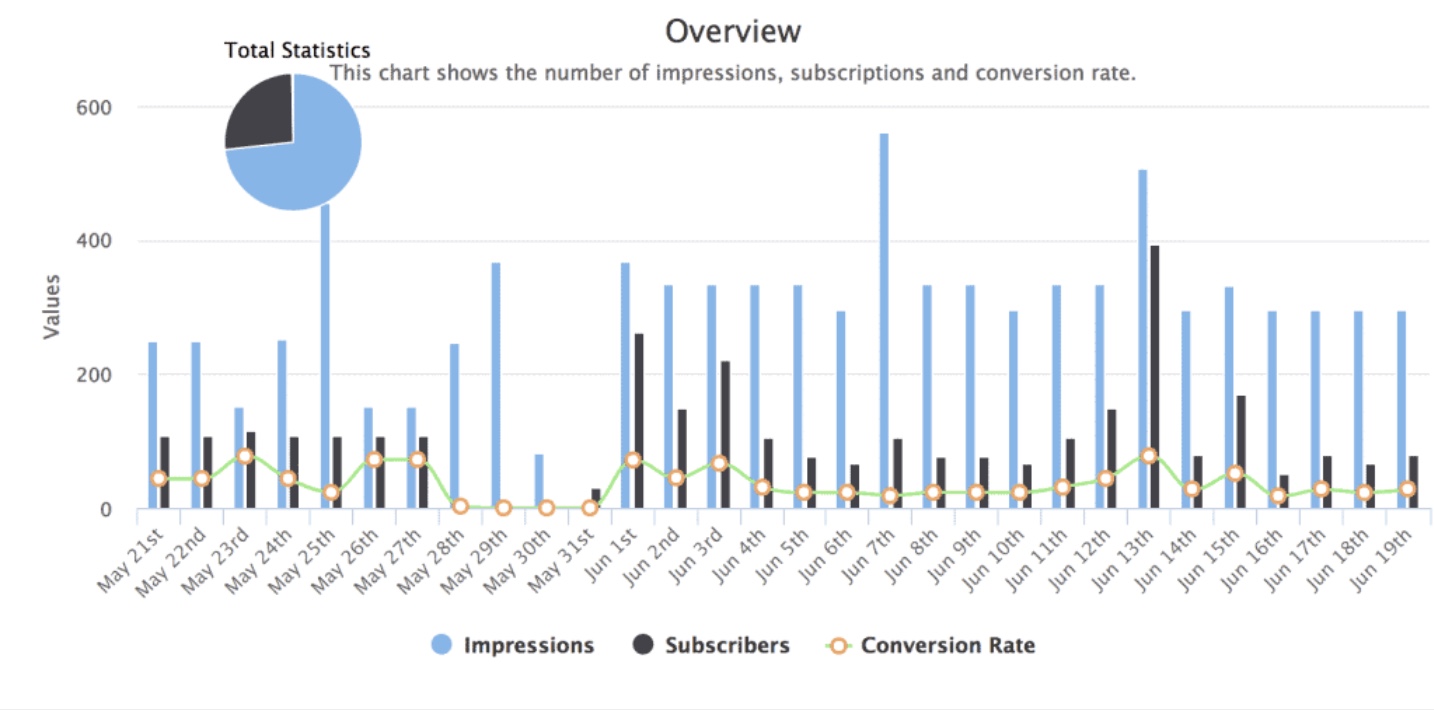
Never work on assumptions, and avoid any program or software that does not have a comprehensive set of metrics for tracking the progress of your email opt-in forms. Assumption is the most basic type of ignorance, but there is power in knowing that can only be obtained by data.
5. Say something more appealing than “newsletter”
Don’t use the bland and overused “newsletter” tag in your email marketing. People have grown accustomed to this phrase; it is no longer tempting and will reduce your click through rate.
Make your subscribers want to open your newsletters. Successful writers, such as Copyblogger, use the term “updates” rather than “newsletter,” so you can come up with something that does not appear orthodox.
6. Adopt social proof
Simply boasting about your subscriber base is effective social proof. These are numbers that are used to entice people to join the mailing list. Now compare these statements: “Join our over 32,000 subscribers and get daily offers” and “Join our over 32 subscribers and get daily offers.”
It doesn’t take rocket science to figure out which one sells the most. The former is more likely to capture users’ attention than the latter.
So, don’t be afraid to manipulate the figures; the numbers just serve to cause conversion; however, don’t get carried away with fake social proof; your true subscriber count will still be clear in your email service provider dashboard.
7. Always use a form, avoid link
It is best to avoid using a link to attract subscribers. It is a very ineffective method of email marketing that has never worked. Why not use a form instead of taking up more room on your site with the “subscribe” link? An opt-in form makes it super easy to subscribe inside the site and can contain valuable information capable of luring stubborn visitors, while a simple link has little to give and the fact that it has to carry a visitor to another page before he can subscribe is a no-brainer.
Use AVADA Marketing Automation to set up opt-in email forms
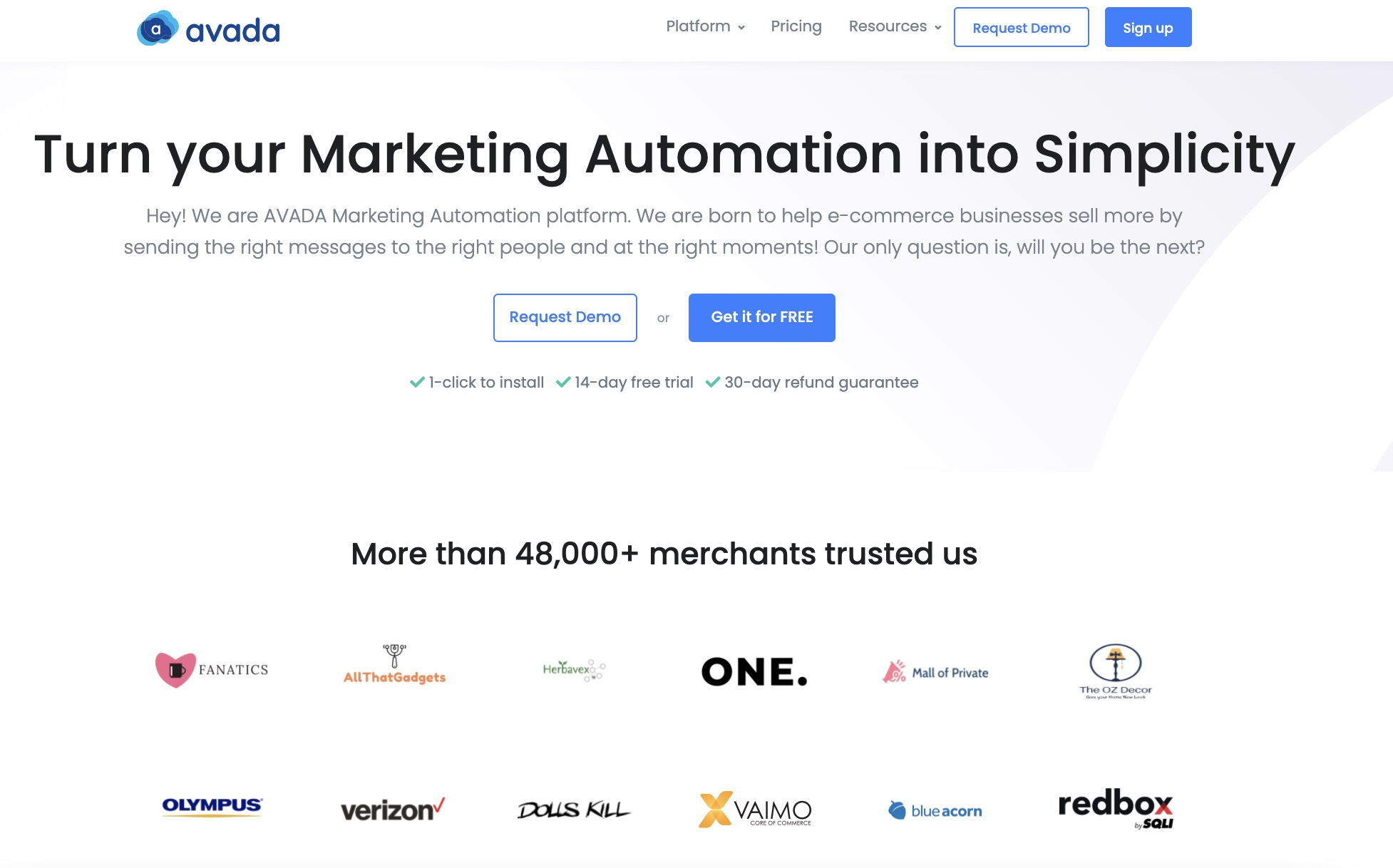
Haven’t found a suitable email marketing tool for setting up opt-in email forms and running email marketing campaigns? AVADA Marketing Automation will be a great choice for you. This tool provides many beautifully designed pre-made opt-in forms, and it also provides a drag-and-drop editor for you to create your own.
Final words
That’s it! I hope that this article has provided you with valuable information about opt-in email marketing. Please feel free to leave comments below for further information on this topic!
New Posts






